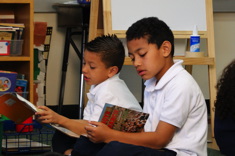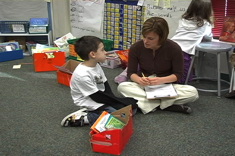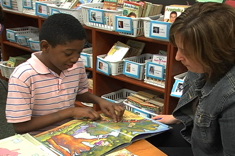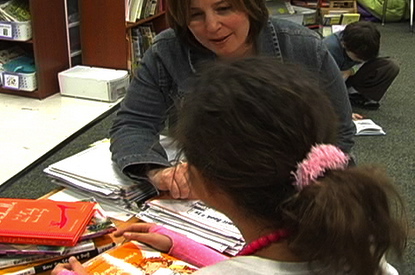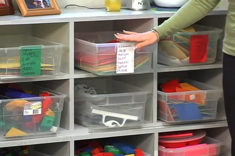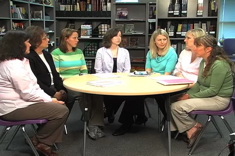I am one of those teachers who fights a constant battle to balance students’ reading time with just-right books with letting them choose freely from many books that interest them. The best way I can win the battle is to observe my students closely, making changes as I see what works well and what needs adjustment. I work with English language learners in a grade-combination class (first and second grade together). My main focus of instruction is to combine language learning with a strong literacy foundation. In other words, they are learning their second language as they are immersed in a strong literacy setting.
While observing and making changes, I keep Sharon Taberski’s voice in my head when she reminds us that “independent reading promotes accurate fluent reading. When children read books repeatedly—books to which they’ve been matched by their teachers because they are just right books—they are developing their sight words vocabulary and consolidating their phonics skills” (page 30 in Comprehension from the Ground Up). I understand her point about why it’s important to get independent reading right, and why it is important to be intentional with the kind of independent reading that we provide.
During reading workshop, I work with small groups in guided reading while the rest of the class is working independently in literacy stations. I have recently made changes in my reading stations based on the several things that I noticed were happening in the classroom.
1. Students were deeply engaged in nonfiction books, discovering their features and responding to the texts in several ways. This interest came after several minilessons.
2. Students’ choices in independent reading were not great. Some of them were reading books that were either too hard or too easy. It was clear to me that it was time to revisit how I’d taught students to select books.
3. Students needed to continue to work on their fluency as they grew stronger as readers every day.
4. Students needed time to talk about what they’ve read and what they’ve discovered. This piece is especially important for English language learners.
During the year, I also keep Debbie Diller’s voice in my head, reminding all of us how important it is that when students are working independently in literacy stations, they are spending the majority of that time reading. Here are some of the struggles we were facing as a community of readers in my classroom:
- Even though a lot of students were engaged, some students seemed lost when trying to select books.
- Students seemed to prefer nonfiction, and were more eager to talk about their books when they were informational.
- Students were taking their guided reading book home for extra practice. But then they didn’t have another chance to interact with those books before they started a new guided reading book.
Realizing that there were things in my classroom that were not working, I made a couple of changes to my literacy stations during reading workshop:
Fluency Reading Bags Station
All children receive guided reading instruction in small groups, where they read books according to their instructional reading levels. They take those books home every night to read to their families, and they bring them back to school the next day. Once students are ready to receive a new guided reading book, they place the one that they finished in a ziplock baggie. They keep all past guided reading books they are still reading for use during the fluency reading bag station to keep developing fluency and sight word recognition. They work on their fluency in this literacy station two to three times a week.
Independent Reading
During this station, students can choose any book from our classroom library. This is the time when they are allowed to read and reread for enjoyment some “easier” books that they just fell in love with. Books by Mo Willems, Todd Parr, Jan Thomas, and Amy K. Rosenthal fall into that category. Many times these are the books that we discovered and use as mentor texts during writing workshop. Students need time to go back to these books and read them again just for fun! They love to make their own selections, because they understand the different purposes for each station as well as their different roles and needs as developing readers.
Exploring Nonfiction Books
At this literacy station students have the opportunity to explore informational books with a partner. This station provides the opportunity for them to talk as they discover features of nonfiction texts, find interesting facts, and ask each other questions. I like to provide my English language learners with a structure for conversation so that it also gives them a starting point. I encourage them to use language such as I wonder… I noticed… I like… I learned…, and so on. These structures form a foundation or a starting point, and by no means are they the only conversations they are allowed to have. I let them explore with a partner, and at the end of reading workshop, I always call on a couple of students who share their findings with the rest of the class.
These three literacy stations provide a well-balanced reading life for my students. I feel confident they are helping them tremendously as I see them getting excited when they select any of these reading stations. For me, that’s the priceless moment: when I see that they get excited about reading, and that they clearly understand the purpose behind each station.

